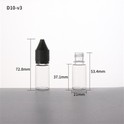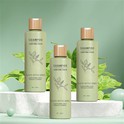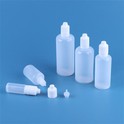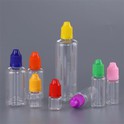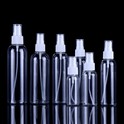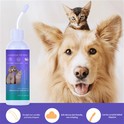There’s no denying that plastic plays a significant role in the manufacturing and packaging industry. Its versatility enables it to be moulded into different shapes and sizes, alongside many other useful properties.
However, as the world continues to take action against the global environmental impact of plastic, many companies are revising their operations to implement sustainable practices. At Petainer, we provide innovative packaging solutions that are specifically designed to fit into the circular economy. Our products are designed to be recycled, to reduce waste leaking into the environment.
PET plastic is a sustainable packaging option and the leading type of plastic used for beverage bottles, owing to its excellent chemical resistance to organic materials and water, and high strength to weight ratio. Here we’re going to explore what exactly PET bottles are, assess their benefits, and compare them to other plastic types.
PET is the preferred for plastic bottles (and other uses) as it’s 100% recyclable and highly sustainable. It can be recovered and recycled into new products again and again, reducing the amount of resources wasted. This is unlike other types of plastic, such as polyvinyl chloride (PVC), low-density polyethylene (LDPE), polypropylene (PP), polystyrene (PS), which are used for things cling film, single-use plastic bags, food containers and disposable cups respectively.
PET also has a low carbon footprint as it uses less energy during manufacturing, which helps suppliers to reduce overall energy consumption. Here at Petainer, we produce PET bottles in factories that are powered by renewable energy, boosting the product’s sustainability credentials and allowing us to cut down on carbon emissions. We can give you an idea of your carbon impact with our Carbon Calculator on our website.
As it’s lightweight, this enables companies to transport large quantities of PET bottles and further reduce carbon emissions that come from transportation. This also makes it an economical choice for businesses.
As previously mentioned, PET is shatterproof and will not cause harm if broken or damaged — it’s known as the ‘safe’ plastic. PET doesn’t contain Bisphenol-A (BPA) either, a chemical that can be harmful in large quantities. Some types of plastic contain this, and it’s been reported to interact with the body’s endocrine system, potentially causing negative health effects. This is the main reason why so many consumers are switching from polycarbonate to PET water coolers, with the former type of plastic often containing BPA.
Overall, PET is a safe, hygienic packaging solution, approved by official health and safety boards. Its composition means it doesn’t react with any food or liquids that come in contact with the material, making PET bottles risk-free and safe to drink from.

